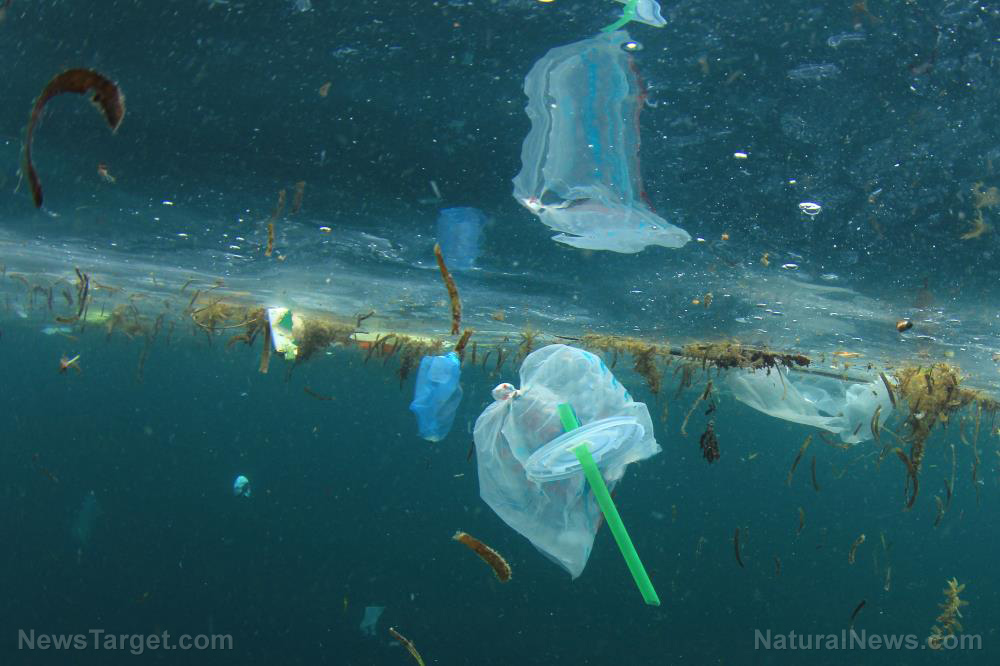Clean up your act: Study finds amount of plastic in the ocean still increasing at an alarming rate
09/19/2019 / By Vicki Batts

Plastic pollution isn’t just unpleasant to look at, it’s one of the biggest threats to environmental health currently facing our planet. There is little doubt that plastic has revolutionized our world, but unfortunately, it may also be what destroys it. Plastic waste pollutes our land and our water, leeches toxic chemicals into our environment, and its very presence in nature puts wildlife in danger. While plastic may make life for humans a little bit more convenient, it is not worth the price.
New research confirms what has long been suspected: The amount of plastic waste in our oceans is continuing to rise, year after year. Even though awareness about limiting the use of plastics is growing, experts say the number of plastic goods in production increases annually — and it seems that plastic continues to find its way into the ocean. (It’s mostly from India and China, by the way, not America.)
The plastic problem
The journal Nature Communications recently published a study which explores 60 years worth of data on ocean plastic. Lars Gutow, a marine ecologist at the Alfred Wegener Institute Helmholtz Centre for Polar and Marine Research in Bremerhaven, Germany, told Mongabay that scientists have long known that the amount of plastic being produced each year was increasing — but figuring out where on Earth all that plastic ends up has been a little bit more elusive.
“We see that the amount of plastics being produced every year is increasing exponentially, but we have no data that show this actual accumulation of marine litter in the environment,” he explained.
Impossible as it may have seemed, Clare Ostle, a marine biogeochemist at the Marine Biological Association in Plymouth, England, managed to find a way. The Marine Biological Association has a fleet of continuous plankton recorders (CPRs) that have been recording data from around the Northern Atlantic Ocean for 60 years. The CPRs are towed behind commercial ships as they travel — but plankton weren’t the only thing being recorded.
As Ostle and her coauthors explain, there are also records of CPR entanglements. By mapping out how often a CPR got snagged on plastic waste, the team was able to identify a marked increase in plastic waste entering the oceans.
“Though it’s exactly what we expected, it really kind of hammered home — this is real,” Ostle commented.
More plastic than fish?
There are many concerns about the ever-accumulating amount of plastic in our oceans and other bodies of water. Some experts have even stated that by the year 2050, there may be more plastic in our oceans than fish. That might sound like hyperbole, but consider this: When plastic enters the ocean, it does not breakdown right away. Once plastic waste makes its way to an ocean gyre, it can stay there for decades. It takes quite a long time, and even when a plastic bag or bottle does break down, the environment is no better off. When plastics start to degrade, they release toxic chemicals that can cause hormone disruption, cancer and other adverse effects.
Taking a look at the potential harm and devastation caused by ocean plastics, it’s hard to believe that estimates suggest that only around 33 percent of plastic waste ends up in the environment — and much of this plastic is hung up on shorelines. Experts say that millions of tons of plastic lines the world’s shores, and eventually that plastic will end up in the ocean.
Even if we halted all plastic dumping effective immediately, the amount of plastic in the ocean would continue to grow for years because there is so much plastic garbage hidden in the environment already. Plastic is a major threat to the health of both the planet and the creatures that live on it. Learn more about keeping Earth health at Environ.news.
Sources for this article include:
Submit a correction >>
Tagged Under:
Ecology, ecosystems, environ, environment, environmental health, marine life, microplastics, ocean health, Oceans, Plastic, plastic waste, research
This article may contain statements that reflect the opinion of the author
RECENT NEWS & ARTICLES
COPYRIGHT © 2017 REAL SCIENCE NEWS





















